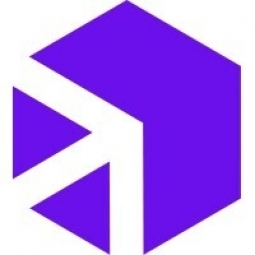Technology Category
- Application Infrastructure & Middleware - Middleware, SDKs & Libraries
- Infrastructure as a Service (IaaS) - Public Cloud
Applicable Functions
- Logistics & Transportation
- Maintenance
Use Cases
- Last Mile Delivery
Services
- System Integration
About The Customer
Bauducco is a part of Pandurata, the largest manufacturer of baked goods in Brazil and the world's largest producer of panettone. The company operates in various market categories, including Panettones, Biscuits, Cookies, Toasts, Cakes, Mini Cakes, and Chocolates. With nearly five thousand employees spread across five plants, twelve subsidiaries, and seven distribution centers, Pandurata supplies more than 150 thousand points of sales. Bauducco, founded in 2012, has more than 80 stores, five manufacturing units, twelve branches, and seven strategic distribution centers. It employs over 6,000 people and is present in more than 180,000 points of sale in Brazil.
The Challenge
Bauducco, a part of the largest manufacturer of baked goods in Brazil, Pandurata, faced a significant challenge in integrating with its U.S. customers through Electronic Data Interchange (EDI) files. The company was looking to replace its current Value-Added Network (VAN) integration for a more sustainable, long-term solution. The existing system was plagued with manual input and data errors, which Bauducco aimed to eliminate. The company also sought to enhance its integration process through the implementation of alerts and error handling mechanisms. The challenge was not only to streamline the integration process but also to increase its efficiency and accuracy.
The Solution
To address these challenges, Bauducco partnered with Digibee to implement a pilot program. The solution involved exchanging EDI files through the Digibee Hybrid Integration Platform with several U.S. customers, including major retailers like Walmart, Costco, and Dollar General. The Digibee platform offered a scalable solution, allowing for additional unlimited replicas when more throughput was needed. The platform also provided support for the development and maintenance of the required integrations, access for 50 users, public cloud hosting, 24/7 monitoring and alerts, a dashboard with operations monitor, and technical support. The platform's upgrades and evolutions were also included within the Software as a Service (SaaS) model.
Operational Impact
Quantitative Benefit

Case Study missing?
Start adding your own!
Register with your work email and create a new case study profile for your business.
Related Case Studies.

Case Study
Increasing Profitability through IoT: A Case Study on Whitaker Oil Company
Whitaker Oil, a fourth-generation, family-owned chemical and composite materials distributor, was facing a significant challenge in managing its complex enterprise. With multiple companies and facilities under its umbrella, the company needed a business software solution that could help them manage and measure profitability at the transaction level. The solution needed to be specifically designed for the chemical industry, considering the unique requirements and challenges of this sector. The company was looking for a solution that could capture every transaction, manage complex batching and blending, inventory management, purchasing, safety, price management, order entry, invoicing, and financial statements.

Case Study
Bayernwerk AG's Cloud-Based Integration Platform for Enhanced Services and Reduced Time to Market
Bayernwerk AG, a subsidiary of global energy leader E.ON, operates one of the largest electricity and gas distribution networks in Germany. The company aimed to create innovative business systems to better utilize existing assets and deliver new digital services faster to members and third-party organizations in the energy industry. However, Bayernwerk AG faced significant gaps in its legacy platforms and was challenged with figuring out the best ways to use existing grid services to develop new products and services. The company also aimed to improve the customer experience and the reusability of its assets and software systems. A primary goal of the digital transformation was to change the role of IT to enable business innovation and foster growth.

Case Study
Optimizing Petroleum Distribution: A Case Study on ABS Bonifer
ABS Bonifer, a petroleum distribution company based in Offenbach, Germany, was facing significant challenges in its dispatching operations. The company's tanker truck dispatching operations were decentralized, leading to inefficiencies and difficulties in managing the fleet of 450 vehicles spread across seven countries in Europe. The company was heavily reliant on paper-based processes for planning and dispatch operations, which was not only time-consuming but also prone to errors. Furthermore, the company needed a solution that would allow it to respond more quickly to sales fluctuations at fuel retailing locations. The lack of a digital solution was hindering the company's ability to adapt to changing market conditions and optimize its operations.

Case Study
Optimizing Business Operations with IoT: A Compilation of Case Studies
The case study compilation presents a variety of challenges faced by different organizations across various sectors. Medical Industrie GmbH & Co. KG needed to optimize and streamline their B2B sales. Bank Sinarmas needed to comply with Indonesian Open-API Standards and exploit the ecosystem economy. MUDUM required a platform to harness the power of the API-driven ecosystem economy. OCP Group needed to standardize their APIs. Al Barid Bank was in the process of digital transformation. Marsa Maroc needed to digitalize its business workflows. PharmLog required an integration platform for seamless pharma logistics. Lufthansa Technik AG needed a B2B integration environment for standardized customer engagement. Socomec needed a hybrid integration tool to boost security and improve efficiency. Hellmann needed to integrate more than 750 application interfaces and over 500 customers.

Case Study
ARD Logistics Enhances Supply Chain Management with WISE WMS & WISE Sequencing
ARD Logistics, a global provider of Supply Chain Management services, faced a significant challenge in delivering parts to a major luxury auto manufacturer. The delivery had to be executed Just-In-Time (JIT) and Just-in-Sequence (JIS), with Very Narrow Aisle Storage (VNA) and utilizing an Automated Storage Retrieval System (ASRS). The company needed a fully integrated warehouse management system that could meet these specific requirements and optimize the loading of Specialized Delivery/Transportation by their fleet of box trucks. The challenge was not only to meet the stringent delivery requirements but also to ensure the system was fully integrated and capable of managing the complex logistics operations.
Case Study
NZ Post's Digital Transformation: Diversifying Services with APIs
NZ Post, a government-owned enterprise providing postal services across New Zealand for over 180 years, was facing a decline in mail services. To adapt to the changing needs of consumers and retailer customers, NZ Post aimed to transform from a traditional mail company into a reliable courier and online digital services organization. The company's goal was to expand its digital solutions and ecommerce logistics services worldwide and offer personalized customer experiences. However, IT complexities and data silos posed significant challenges. The company needed to access and gather data from disparate systems, such as parcel tracking data, contact center data, and financial data, to gain necessary insights for creating personalized customer experiences, launching innovative solutions, and expanding its ecosystem.







